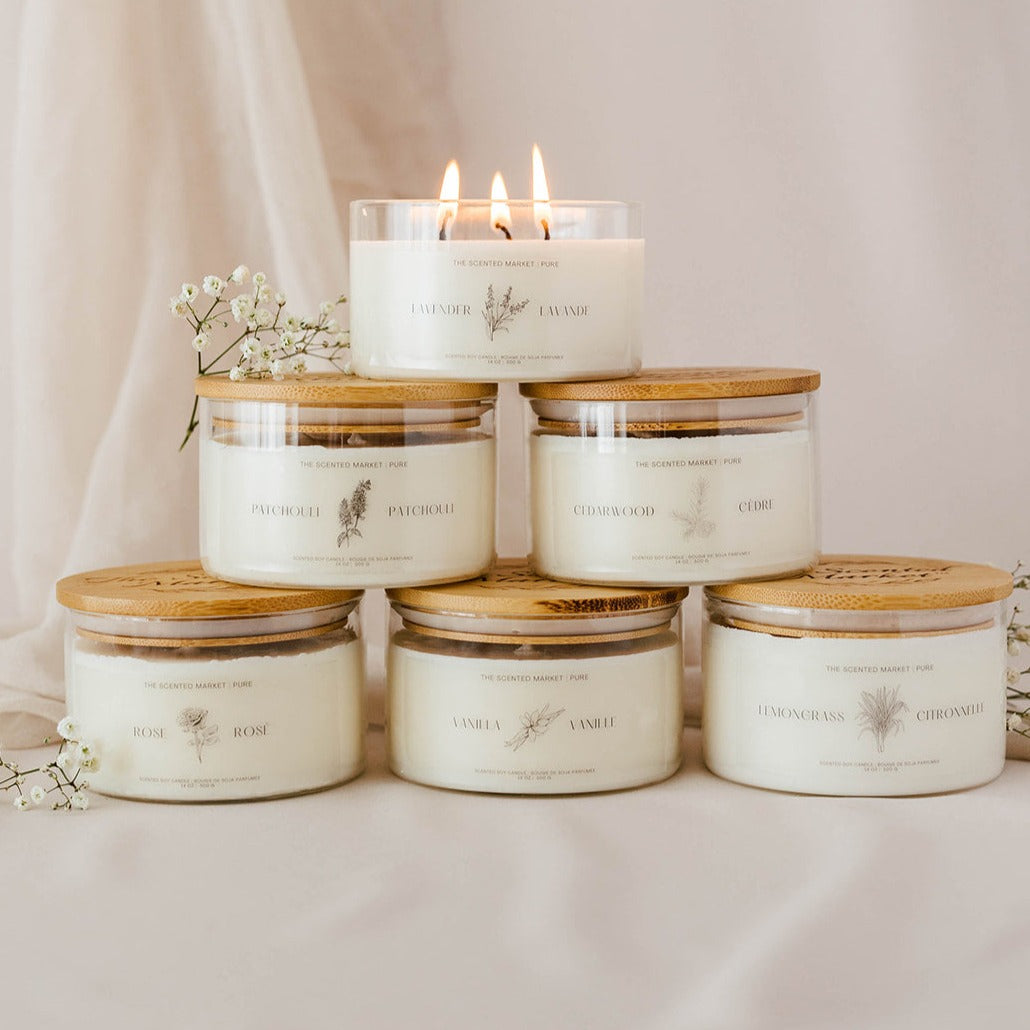Encounter the Calmness of Crystal Soy Candles and Home Fragrance
From Wick to Wax: Recognizing the Chemistry Behind Soy Wax Candles and Their Ecological Influence
As we brighten our spaces with the warm glow of candles, there lies a realm of detailed chemistry behind the relatively easy act of lighting a soy wax candle. The selection between soy and paraffin wax expands beyond plain looks, delving right into the realm of environmental influence and the really composition of the materials. Comprehending the molecular framework of soy wax and its burning process clarifies the emissions launched into our environments. Join us as we unravel the scientific complexities behind soy wax candle lights and explore their ramifications on our environment.
Soy Wax Vs. Paraffin Wax
When comparing soy wax and paraffin wax for candle light making, it is necessary to recognize the distinct features and advantages of each product. Soy wax is a natural, renewable energy obtained from soybean oil, making it eco-friendly and biodegradable - soy wax candles. In comparison, paraffin wax is a byproduct of oil refining, which increases issues about its environmental impact and sustainability
Soy wax candle lights shed cleaner and release less residue contrasted to paraffin wax candle lights, making them a much healthier option for indoor air top quality. Additionally, soy wax has a lower melting point, enabling a longer-lasting candle that distributes scent better. Paraffin wax, on the other hand, often tends to shed faster and much less easily, potentially launching hazardous chemicals right into the air.
From a sustainability point of view, soy wax is preferred for its biodegradability and sustainable sourcing, lining up with the growing consumer preference for environmentally aware items. While paraffin wax has actually been a conventional selection in candle light making due to its affordability and simplicity of use, the change towards environmentally friendly options like soy wax is gaining momentum in the sector.
Chemical Composition of Soy Wax

Combustion Process in Soy Candles
The chemical make-up of soy wax directly affects the burning process in soy candle lights, impacting aspects such as burn time, scent launch, and environmental influence. When a soy candle light is lit, the warm from the flame thaws the wax visit this site right here near the wick.
The burning effectiveness of soy candle lights is affected by the purity of the soy wax and the top quality of the wick. Additionally, soy wax candle lights have a lower environmental influence compared to paraffin candles due to their eco-friendly and sustainable nature.

Environmental Advantages of Soy Wax

Thought about a sustainable choice to standard paraffin wax, soy wax offers remarkable ecological benefits that make it a preferred choice amongst eco-conscious customers. Soy wax burns cleaner and produces much less soot than paraffin wax, contributing to far better indoor air quality and reducing the requirement for cleaning and upkeep. Overall, the ecological benefits of soy wax straighten with the growing need for eco-friendly and lasting products in the market.
Recycling and Disposal Factors To Consider
Reusing and appropriate disposal of soy wax candles play a critical duty in preserving ecological sustainability and lowering waste in families and areas. When it comes to reusing soy find out here now wax candle lights, the first action is to make sure that the candle light has actually melted entirely.

In terms of disposal, if recycling is not an alternative, soy wax candle lights are biodegradable and can be safely thrown away in many home waste systems. It is always advised to check with regional recycling facilities or waste management solutions for specific guidelines on candle light disposal to guarantee proper handling and environmental defense.
Final Thought
In conclusion, the chemistry behind soy wax candle lights reveals their ecological advantages over paraffin wax candles. Soy wax, stemmed from soybean oil, burns cleaner and generates much less residue when compared to paraffin wax. The burning process in soy candle lights is more effective, bring about a much longer and a lot more even melt. Additionally, soy wax is naturally degradable and eco-friendly, making it an extra sustainable option for candle manufacturing. Reusing and correct disposal of soy wax candles better add to their environmental influence.
When contrasting soy wax and paraffin wax for candle making, it is necessary to recognize the click to read more unique characteristics and benefits of each material (crystal soy candles).Soy wax candle lights burn cleaner and emit much less soot compared to paraffin wax candle lights, making them a healthier selection for indoor air high quality.Taken into consideration a lasting option to conventional paraffin wax, soy wax supplies noteworthy environmental benefits that make it a popular choice among eco-conscious consumers. Soy wax burns cleaner and creates less residue than paraffin wax, contributing to much better indoor air quality and minimizing the demand for cleaning and upkeep.In verdict, the chemistry behind soy wax candles exposes their environmental benefits over paraffin wax candle lights